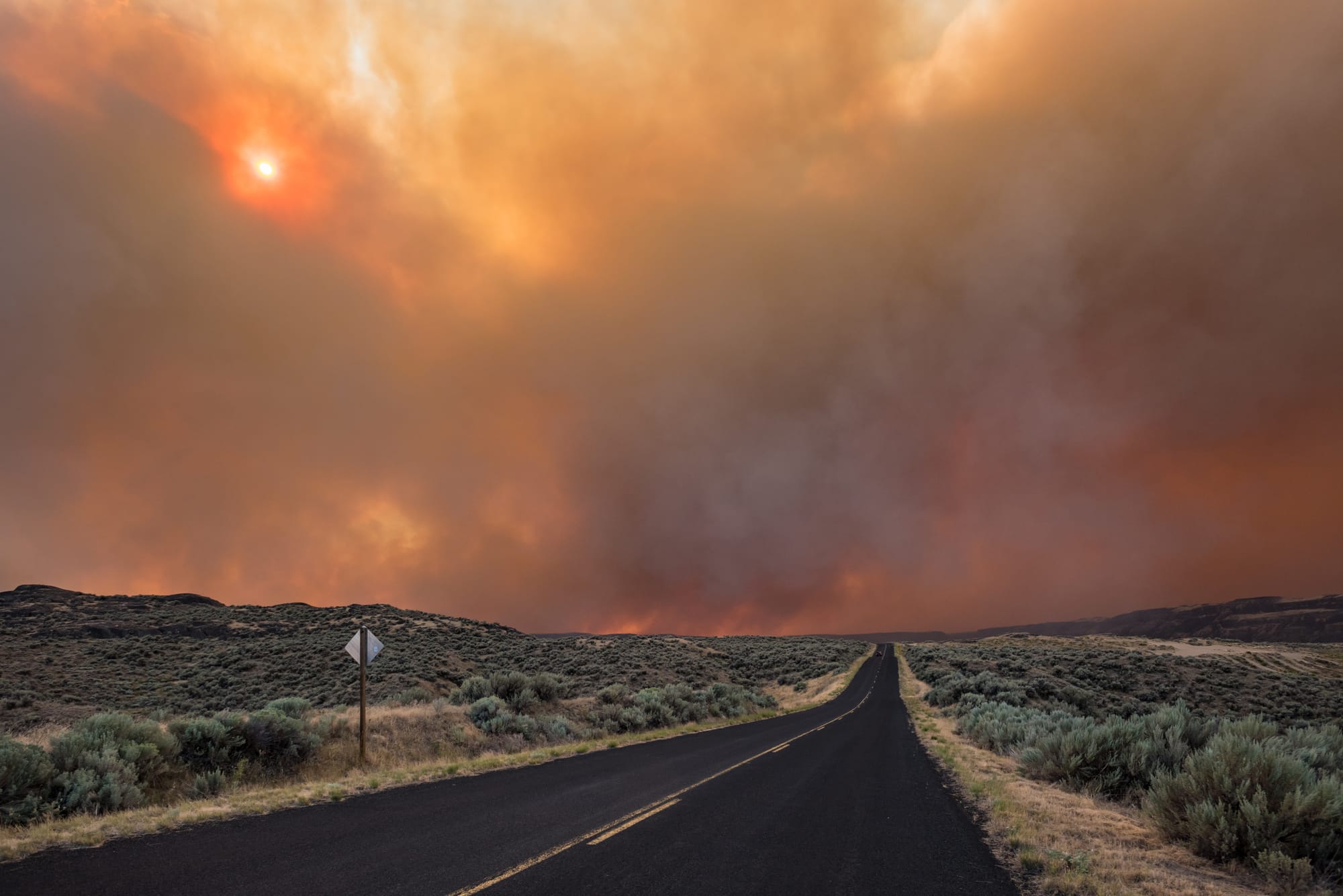Kindling

Published in Sweet: A Literary Confection https://sweetlit.com/issue-10-1/essay-lisa-laughlin/
Winner of the 2017 Nonfiction Contest
The summer I moved back to Ephrata, nearly all of Washington State caught on fire. On the east side, there had been even less rain than usual. The Smoky Bear Fire Status had read bright-red EXTREME since May.
Dry, hot conditions are the norm for the scablands; this summer there was drought. It was the summer after the crack in Wanapum Dam, when the river sank so low near Vantage Bridge that the Old Vantage Highway became visible for the first time in 50 years since the dam had been finished. Even locals took photos of the clay-dust highway—it was a real-life road to nowhere, reminiscent of Shel Silverstein’s Where the Sidewalk Ends.
The summer of the fires, people around town began to die suddenly and spectacularly. A man perished in a nose-down float plane crash just over Banks Lake. A man at Sun Lakes jumped off a moving boat one Saturday and never came up. His body announced itself in the Grant County Journal, days later. By June, there had already been 300 wildfires.
There was deadfall in the hills—trees burned out from the year before, charred black. It welcomed flame like kindling. There were statewide fire bans. There were dry lightning storms and teenage pyros. A 69-year-old Ephrata man went fishing alone on a heat-wave-baked afternoon, hopped off his boat for a swim, and disappeared. The county deployed divers. Cars stalled on the highways, overheating.
I watched the red flame squares expand on my iPhone screen. Each morning I dressed early in crisp business wear and made a cup of coffee and opened the Northwest Large Fire Map along with my emails. Sirens wailed as my father started wheat harvest. Farm equipment sparked a fire near Walla Walla. Barack Obama declared a state of emergency. The National Guard flooded the state. The names of the fires hinted at a natural savagery: the Wolverine Fire, the Cougar Creek Fire. Fires melded to make complexes. The Grizzly Bear Complex included 17 fires. The wind cascaded flames and snuffed firefighters. NASA’s Aqua satellite snapped an image from outer space on August 23rd, 2015, showing blue-grey smoke swirling next to cirrus clouds. In small mountain towns, cougars strolled down sidewalks, flushed from the hills.
The mood that summer rang apocalyptic, but it was also familiar. The same winds we shouldered in the lion days of March were the winds forcing flames so fast they jumped hillsides, the winds depositing ash on our driveways. The smoke-dry air that parched our mouths was the same air that cracked creek beds every June.
My family didn’t call when the fire swept up the Palisades Canyon. A neighbor friend tipped me off, texting to ask if my parents had evacuated yet. When I got the text, I was sitting on the couch in my duplex, still in dress pants from a day at work. The fire was clawing up the canyon, pushed by the wind. If it hit the plateau of wheat fields—the plateau including my childhood home—it would flood the flat with fire. I called my parents’ landline. My mother did not answer the phone.
I reached the answering machine message in which she dissolved in laughter, the message my younger brother had to step in to finish: We’ll call you back as soon as we can. They had been laughing at something that grew to hysteria when they went to record the message. My mother kept the recording as the default answer after four missed rings. Most strangers who called thought the message was a prank. As I sped toward the fire, I imagined the message as her last words: Please leave a name and . . . her voice crumbling, fading—BEEP.
When I drove down my parents’ driveway, spraying gravel, my panic turned to anger. My mother stood near the edge of our property with my aunt. They were fine. The fire had made it up the canyon, though. They hardly glanced away from the smoke when I drove in. My uncle was there, and my cousin’s boyfriend, and behind me a neighbor father and son drove in. The first words I spat to my mother were, Why didn’t you call me?
She didn’t know what to load into the car, she told me. She wanted the china, her jewelry, her porcelain doll from a trip to Japan. She knew she’d need the birth certificates, the social security cards, the financial records for the farm, if there was time. I can’t believe you didn’t call me, I said again.
I knew in the moment I was being petty, but it wasn’t until after I realized it was because I was scared. I feared things disappearing with the same speed particles burst to flame. I was afraid of the rupture, the breaking: solid things like concrete dams had been coming inexplicably undone.
I stood next to my mother in knee-high cheatgrass as evening merged with the black of the wildfire smoke. She had loaded a box into her car. I didn’t ask what was in it. Suddenly, the wind changed direction. The fire department called off our evacuation notice. We watched the thin orange line at the front of the fire creep over a hill of sage, and disappear.
We didn’t lose our home, or any members of our family. But I realized that night the loss was inevitable; if not that year, perhaps the next. Perhaps the year after that, or twenty years more. It was as certain as mountain deadfall catching flame. And I realized, when the loss did come, it might be right to call it an apocalypse—but it would be right, too, to call it nature.